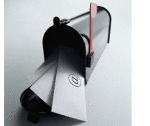Henderson Equine Clinic is participating in this program. Two important notes are that it only includes horses vaccinated after 6/10/2012. And it is First come first served.
STATE OF NEW YORK
DEPARTMENT OF AGRICULTURE AND MARKETS
10B Airline Drive
Albany, New York 12235
518-457-3502 fax 518-485-7773
EEE Vaccination Rebate Program for NY Horses
In response to mounting concerns regarding the increased number of cases of Eastern Equine
Encephalitis (EEE), both in humans and in horses in New York over the last few years, the New York State
Senate has recently allocated funds for various activities meant to reduce the threat of EEE in people
and in horses.
The NYS Department of Agriculture and Markets, Division of Animal Industry has been assigned the task
of running a vaccination program by offering $15.00 discounts to horse owners who get their horses
vaccinated against EEE. The program is open to all horses residing in New York State. Veterinarians who
participate in the rebate program agree to discount their vaccination fees by $15.00 per horse. The state
will then reimburse the veterinarian $15.00 per vaccinated horse. The vaccination must be given by the
veterinarian or veterinary technician in order to qualify.
The program will run from June 10, 2012 until August 31, 2012. This is a “first-come, first-served”
program or until our funds are expended. If funds are left over after 8-31-12, we will restore the rebate
program in early 2013.
Any veterinarian legally able to practice in New York State can participate. Veterinarians need to fill out
a form requesting the desired number of rebate certificates. (Only one horse per rebate certificate). The
Rebate Request Form can be found online @ http://www.agriculture.ny.gov/AI/vet.html (look under the
section called “Forms”) or we can fax, email or mail it to you. Complete the request form and fax it back
to us. Once we receive your request, we mail you the certificates along with the tax ID forms (W-9) that
you must complete and send back with the original certificates once the horse(s) have been vaccinated.
Complete instructions for the rebate certificates can be found on the backside of the certificates. All
original forms must be sent back in order to receive your rebate. No additional incurred veterinary fees
will be paid for (i.e. – call charge, biohazard fees, etc). Once all forms are received, we will verify this and
send you a rebate check.
If you have any questions, please email or call the Division of Animal Industry at dai@agriculture.ny.gov
or 518-457-3502.
EEE Vaccination Rebate Program for NY HorsesIn response to mounting concerns regarding the increased number of cases of Eastern Equine Encephalitis (EEE), both in humans and in horses in New York over the last few years, the New York StateSenate has recently allocated funds for various activities meant to reduce the threat of EEE in people and in horses.The NYS Department of Agriculture and Markets, Division of Animal Industry has been assigned the task of running a vaccination program by offering $15.00 discounts to horse owners who get their horses vaccinated against EEE. The program is open to all horses residing in New York State. Veterinarians who participate in the rebate program agree to discount their vaccination fees by $15.00 per horse. The state will then reimburse the veterinarian $15.00 per vaccinated horse. The vaccination must be given by the veterinarian or veterinary technician in order to qualify. The program will run from June 10, 2012 until August 31, 2012. This is a “first-come, first-served” program or until our funds are expended. If funds are left over after 8-31-12, we will restore the rebate program in early 2013. Any veterinarian legally able to practice in New York State can participate. Veterinarians need to fill out a form requesting the desired number of rebate certificates. (Only one horse per rebate certificate). The Rebate Request Form can be found online @ http://www.agriculture.ny.gov/AI/vet.html (look under the section called “Forms”) or we can fax, email or mail it to you. Complete the request form and fax it back to us. Once we receive your request, we mail you the certificates along with the tax ID forms (W-9) that you must complete and send back with the original certificates once the horse(s) have been vaccinated. Complete instructions for the rebate certificates can be found on the backside of the certificates. All original forms must be sent back in order to receive your rebate. No additional incurred veterinary fees will be paid for (i.e. – call charge, biohazard fees, etc). Once all forms are received, we will verify this and send you a rebate check.If you have any questions, please email or call the Division of Animal Industry at dai@agriculture.ny.govor 518-457-3502.
 Wednesday, July 25, 2012
Wednesday, July 25, 2012 

